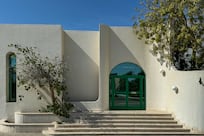Overview
From 2004 to 2008 and 2010 to 2014, oil production and prices both rose. The price increases were completely divorced from the market principle of a supply-demand balance. In the middle of 2014, the price momentum ran out of steam and prices began sinking in a bog of unconsumed, overproduced, expensive new oil.
That market disorder should have been a reason for concern. Unfortunately, greed suppressed the voices that raised the alarm and warned of the long-term dangers of short-term gains.
Today, the producers who used to be price setters through supply control can produce only what costs less than the market price, which they no longer influence. Things will become normal only when we have the horse back before the cart.
The last quarter of 2015 was a busy touring time for many oil ministers of Opec and other exporters. There were sighs of relief on February 16, when the ministers of Russia, Saudi Arabia, Venezuela and Qatar announced that they had reached agreement in principle on a scheme to reduce oversupply and return to a state of balanced supply and demand. The scheme will now be presented to other producers, including the UAE, on April 17 in Doha.
History lesson
In the early 1980s, with the price of oil above US$34 per barrel, Opec member countries were producing more than 30 million barrels per day. The commencement of supplies from the North Sea, Alaska and other new basins coincided with the completion of crude oil purchasing by member states of the International Energy Agency for their strategic reserves. The volumes were purchased at a rate of about half a million barrels per day and were wrongly considered by Opec, at the time, as demand increase for consumption and not storage. That masked a big drop in demand. Coupled with the increase in supply from the new fields, this was the beginning of the first major price collapse that Opec had to deal with.
Because of the resulting glut, members could not achieve the prices Opec had announced. Opec had no alternative but to resort to production cuts as a tool to support prices.
When Opec production was cut to 13 million barrels per day from more than 30 million without any sign of an end to the price dive, Opec started worrying about losing market share. Opec’s market share fight was intended to confront other oil exporters who maintained or even increased production while Opec was cutting production to protect prices.
That led to a massive shift towards “netback” contracts. Under those contracts, oil producers got only what was left from the gross value of all the products derived from a barrel of crude oil, after deducting costs. The costs included transportation, insurance, refining, storage, bank charges and any other cost of the deal. It was a dream time for refiners and traders.
Many netback contracts were concluded with refiners and traders who did not own or have access to refineries. The refining costs charged were fictitious or negotiated and often exaggerated to cover commissions and kickbacks. The lowest price we heard of, at the time, was $3 for a barrel of Arab Heavy, with Latin America as the destination.
Setting a production ceiling for Opec, then dividing that into quotas for its members, is in fact using production control or management to achieve a price target or maintain a price level.
Opec had taken over price-setting after abolishing, in the 1970s, the “posted price” system used by the Seven Sisters (the reigning oil group before Opec came on to the scene) during the concessions period.
Opec would periodically set and announce what were called official prices. Opec sets the price of the marker, Saudi Arab Light in the Arabian Gulf, as well as a set of differentials between the marker and other Opec crude oils.
Opec’s official price was what it was trying to protect by introducing the quota system and cutting production. However, Opec moved to a target price system after the costly market share fiasco.
That involved the creation of a reference basket of crude oils, the average price of which was to become the indicator to trigger changes that would maintain or target the desired price level.
The first target price set for the basket was $18, which was increased in July 1990 to $21 with a production ceiling of 20.92 million barrels per day and a mechanism for adjustment. This allowed the automatic increase of the ceiling by half a million barrels whenever the basket price averaged, over a period of time, more than the set target, and a reduction by the same amount when the average was below target.
While demand for oil, in normal situations, is set and influenced by several factors such as world population, economic prosperity, the weather and a variety of events, supply is decided mainly by producers.
This was the only tool that producers had to set and manage prices. So production levels set the “free market” price levels.
Price rules
While the ruling principles in today’s oil markets remain unchanged, the effective production management has been taken over by the price.
The situation today is unique. Not only because of the low prices, but now it is the price level that dictates the production level and not vice versa.
With the price collapse since mid-2014, the industry lived through successive production facility closures and a drastic reduction in the number of drilling rigs. The closures over the past 18 months started with the most costly, but others quickly followed whenever the market price did not cover their cost.
The closed facilities included old fields that were rehabilitated with the price surge as well as new fields in deep waters, rock and other unconventional sources of oil and gas.
A number of the closed or mothballed facilities will be very much like “sleeper cells”. They will hibernate and wait to come back into production when economics allow.
This means the market price will in fact influence the level of available or possible production. It will be a case of the price continuing to set the production level.
This phenomenon will lead to continued price fluctuations for some time — unless there was, from some unexpected event, a very high increase in demand that would accelerate the absorption of all surplus supplies.
Needless to say, the cost of production of closed conventional and unconventional oil facilities, as well as that of alternative sources of energy, will be setting the price ceiling for crude oil in the free markets.
Opec, in spite of its diminishing market share, will be able in future, through production management, to influence the competitiveness of other sources by clearly setting price targets that are uneconomic for them.
Whatever the threshold price level that Opec sets or targets to reduce competition will have to be reviewed periodically and adjusted to reflect changes in technology and other cost-reducing measures.
Even now with the slight increase in prices since the start of discussions about production level freezing, there are some moves for comebacks. Already some Ducs, or wells that had been drilled but uncompleted, are under consideration for reactivation.
Additional crude production from such moves will depress prices, delay their recovery and the return to balanced supply- demand state. It will also prolong the period of price fluctuations and delay decisions relating to investment in exploration and long lead time projects.
The next steps
The four-country February 16 scheme is based on freezing participants’ production, originally at the level of January this year, for a period to be agreed on. Based on what is achieved in that period, the freeze may be extended or a cut agreed on, or both.
The scheme aims to reduce overall supplies by: natural depletion of oil reservoirs; closure of uneconomic fields and unconventional oil ventures; global demand growth; and drawdown of commercial stocks and stored unsold old production.
According to Mohammed Al Sada, the Qatari energy minister who will be hosting the Doha meeting, 15 countries that account for 73 per cent of global oil production have expressed support of the production freeze.
Iran has declared that it will not participate in any freeze before its production reaches what it considers its rightful level, which it had not stated so far. Iran, whose exports were constrained by boycotts and sanctions but have doubled since their removal, has a point in not accepting the freeze at the January production level. However, Iran’s participation remains important, at least for the optics.
We have heard a variety of views from different producers, most of whom are producing at their full available capacities. Generally, they were supportive of any move that will lead to higher prices with the exception of production cuts. Many expressed conditional support to the proposed freeze, raising issues that will take time to thrash out.
The Opec secretary general Abdalla El Badri, the official spokesman for the organisation, has said that the proposed production freeze is only a first step. Other measures, including production cuts, will be considered depending on what is achieved by the freeze, he said.
It was also noted that the secretary general was, for the first time, talking of “moderate” prices. A term we can add to reasonable, high, low and fair, which are often used by ministers and oil officials without quantifying them. Numbers, especially in the case of prices, would be so much easier to comprehend.
Judging by Opec’s experience with its quota system, monitoring adherence, a difficult task, will be critical for the success of any agreement concluded. When countries are in dire need for cash, they become very creative in twisting and even breaking the rules. Light crude oil might get booked as condensate or crude sold as fuel oil.
Postscript
It might be useful to mention the major and independent companies who are oil producers from concessions and fully owned fields. In some cases they are bigger producers than some of the countries invited to Doha. In all cases, they contribute to supply and they are also interested in better prices and stable markets. Is it not surprising that they are not invited, even as observers?
On that point, I wish to recall that when the International Energy Forum was established, it was open to producer and consumer nations. Its early conferences in 1991 only had representatives from member states. It was not long before it was realised that a big chunk of the energy industry was not represented. An additional day in each conference was allocated for mixed sessions of governmental and industry leaders to debate issues of mutual interest.
The change enriched the debates and discussions and made the IEF a true global energy forum. The more the merrier remains valid, especially when the going is rough.
On second thought, as the meeting will be focusing on the price issue, it might make it, for legal consideration, difficult for some companies to attend if invited. However, an invitation would be a sign of good faith while the truce continues.
The writer was an adviser to Qatar’s minister of energy and industry. He has also been the deputy secretary general of Opec and the chief executive of Iraq’s State Oil Marketing Organisation.
business@thenational.ae
Follow The National's Business section on Twitter





